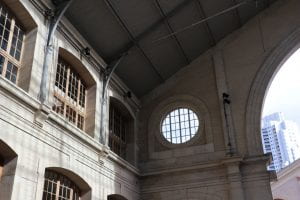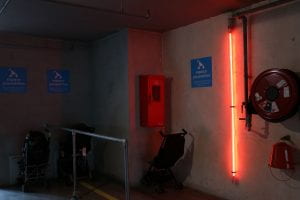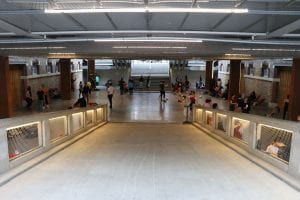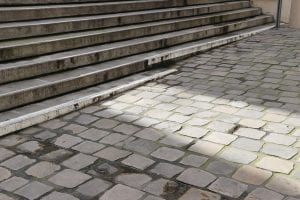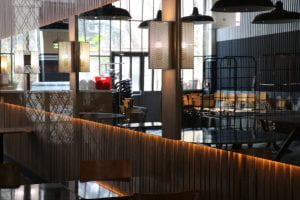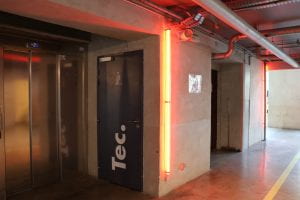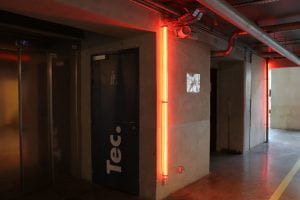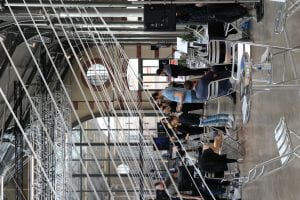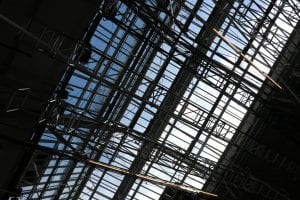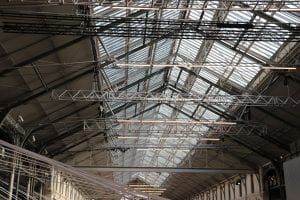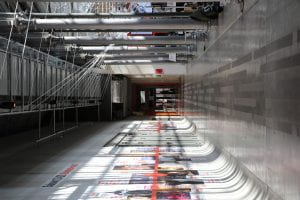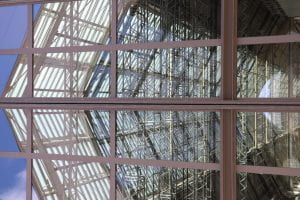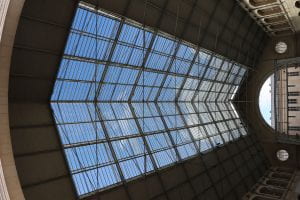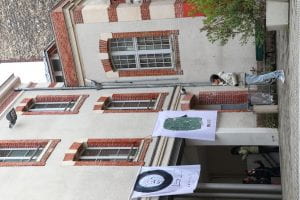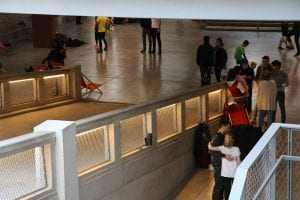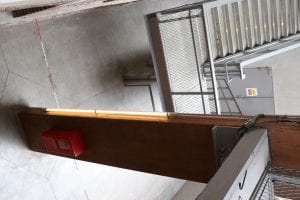- “Erasure is never merely a matter of making things disappear: there is always some detritus strewn about in the aftermath…some reminder of the violence done to make the world look new again”.
- Additive substraction
- “Erased de Kooning Drawing” by Robert Rauschenberg. I love this artwork so much because its concept holds so much weight. Because of Kooning’s fame at the time, not only is it a statement to erase his drawing. But the drawing actually gained more value by being erased. As I said in a previous reading response, what’s beautiful about life and people and things is that they don’t last forever. And going with the famous saying that you don’t appreciate something enough until it’s gone it applies perfectly not only to life but to artworks like this one.
- “There is something seductive about an erased truth lurking between the lines”. I think he’s right because I’ve realized that as humans, we tend to be very curious and always want to know more or learn more. Even when it comes to dumb tabloids and celebrity gossip it still sells so much because people always want to know more especially if its considered secret.
- “An erased human face remains horrible eloquent. In fact, a face cannot be made to vanish completely: it stays sufficiently human to horrify by its exact lack of humanity”. You still need to be able to associate to a once human form for it to have effect. I think association in general is super important because it’s what triggers everything in the brain like thoughts, ideas and feelings.
- “Hold your etch a sketch at the right angle and all your previous inscriptions are still visible”. I think this is applicable but only works when you’re looking for it. The same can be applied to buildings. For example La Villette’s traces of its history and the slaughterhouse aren’t visible at first sight. Maybe not even visible at second or third, you really have to go look for yourself and do some research. I know this because I know a lot of people who know La Villette well and yet they’re always surprised when I reveal to them what it used to be.
La Villette second visit – fieldwork
I went today to the Villette for a second time with a plan in mind. I had my tripod, my camera, my bag and my umbrella. I was hoping the rain would be on and off just like the previous days but as unlucky as I am, it was non-stop extremely heavy rain with wind. I knew I didn’t have a choice as I didn’t have any other day in risk of falling behind. I had to push through.
I stayed out in the rain with the heavy equipment, hitting all the folies in the park, for a bit more than 4 hours. It was one of the hardest and most tiring experiences I’ve had with field work and photography. The wind was blowing, I was only getting wetter and colder and was constantly worried about the camera receiving too much water.
It was also mentally challenging as I had to keep the goal in mind and finish what then seemed like an endless process in such extreme weather. I definitely caught a cold and drenched all of my clothes and bag but luckily the camera survived.I’m very happy with the approach I came up with and the determination I kept to make it happen. All I have left to do is figure out how I’m going to put the video together: am I going to group all the angles of one folie and display them at the same time or am I going to leave each picture individually ?
Project 2: Cent Quatre first visit
On Saturday, I went to the Cent Quatre to start shooting material and try to get inspired and start figuring out what I’m going to do for this second project of defacement. Not to my surprise, the Cent Quatre was hosting residencies exhibitions, as well as an art installation, and many other people were there dancing, rehearsing, acting, playing football, practicing circus stunts freely around the space, typical Cent Quatre environment.
I focused on the architecture and I didn’t want to get people in the pictures at first because my plan is to overlay religious chants, horse hooves, and any sound that can portray the building’s older function with the present ‘s architectural images. However for the sake of eperimentation I also filmed a few clips of people’s activities and the variety of movements I found.
However, I’m leaving most of the filming for when my friend will have the choreography ready. I will use her dancing as my main footage to translate movement and expression as I have her approval to film her (unlike filming strangers who’s filming rights I don’t have).
Here are some picture examples. I thought it was interesting to see what the little indoor areas had turned into. For example, there is an “espace poussette” to park strollers. There is also the bathroom space so it would be interesting to overlay these with the sounds of the older functions of these areas. I hope the Cent Quatre answers soon to my email about building archives to know more in depth about the building’s history. There is also the lower platform where people were practicing sports which is where I imagine the morgue used to be, or maybe where they stored the coffins. When I photographed the outdoor alleys and main entrances I imagined horses dragging carriages with the dead bodies. Where I saw staircases I imagined the sound of old leather shoes and wooden heels stepping on stone stairs. Where I saw cafes I imagined people in mourning waiting to be attended.
My plan for next wednesday/thursday is to start editing and overlaying and see what can be done. I know that for the pictures I want a sombre and not very vivid feel. So basically putting forth the colors of the architecture which are usually grey and beige and edit them with high contrast and lower exposure. I was thinking of putting them in black and white or sepia-ish to maybe emphasize the past but I’m scared it turns cliche. I hope that by next week-end I have a clearer technical direction, that the Cent Quatre answered me and hopefully I can start filming the movement part of my experimental film.
(I couldn’t insert video files as they are too large).
La Villette fieldtrip
On Wednesday 26 we went to La Villette for fieldwork. I had prepared an approach but once we got there and were given the assignment I realized that what I had prepared was irrelevant and not the way to go. I had to come up with something else, so I took a look around to figure out how I wanted to photograph and document the architectural non functionality. After my visit and “promenade”, I reviewed the presentations and references given to us. I knew I had to come back with a plan in my head and retake pictures. I decided to document the Villette as such: the only consistency in the park is the grid of folies. So I will take a picture of the park from each side (usually 4 angles) of all the folies in the same order ( West, South, East then North- anti clockwise). I will start by following the vertical axis, so from the entry straight up to cite des sciences, and then follow the horizontal axis and do a snake-like path to hit all the remaining folies. Because of other projects, my schedule only allows me to go back on Sunday. I was hoping the weather wouldn’t be too bad but I hoped wrong.
Project 2: Research and brief pitch
Project 2: Defacement
THEME:
Paris wears many scars of centuries of social and political conflict. Citizens and rulers have intervened in the cityscape over centuries to make major physical and architectural transformations that are central to its revolutionary spirit. Taking La Villette as a case study (reading Bataille and Hollier), this project explores the performative and symbolic that role acts of destruction, violence and erasure have played in the city’s spaces. It looks into the future from the past: the first and second French revolution to Baron Haussmann’s radical renovations, from the upheavals of 1968 to the current anti government and climate protests as well as Gilets Jaunes movements, and into the future, to inquire whether performing defacement is not only a negative but also a positive force, as in the “Labor of the Negative” (Taussig).
BRIEF:
Create a body of work that documents, interprets or re enacts an instance or a material form of
physical erasure in response to a specific Parisian urban scape or social dynamic. It can be based on traces you locate in the city of historic events, or examine the evidence of one of the social resistance or revolutionary movements or a political act of control via destruction. This will require you to examine the material and aesthetics of Paris. Your work can also study past traces of defacement in the built environment or it might imagine alternatives for the future of Paris. Your project may be fictional (past, present, future), or it can cite a real life event, based on documentary material, or a combination of any of the above.
THROUGH THE ASSESSABLE TASK STUDENTS WILL:
1) have a strong grasp of the city
as a material, finding form for a new iteration of revolution
and change;
2) be able to think on both a material and conceptual level about the entwined
relationship of aesthetics, politics, space and the fabric of the city; 3) develop new skills to
resolve difficult or abstract concepts through collaborative place based experimentation,
documentation, research and writing.
The Cent Quatre history of the building:
In 1870, the Archbishop of Paris, responsible for city burials, established a funeral service on a site known as les Petits Noyers. He ordered the construction of a new building on the site, covering an area of 26,000m², alongside the railtracks leading to the Gare de l’Est, between the rue des Vertus (now the rue d’Aubervilliers) and the rue Curial.[1]
In 1874, after two years of work, the building was inaugurated. It was the work of the architects Édouard Delebarre de Bay[2] and Godon, under the supervision of Victor Baltard, chief architect of Paris. The building was conceived in the style of the industrial architecture of the time (that of large train stations and exhibition halls),and constructed around a cast-iron frame using glass and brick. The surface area of the building was the same as the Place de la République. It consisted on two large canopied halls, loading bays, areas, stables and cellars, and was over 270m long.
For over 120 years, the building housed the city undertakers for Paris. Over 1,000 people worked in the building, organising 150 funeral processions per day. The main hall on the rue d’Aubervilliers was used for the preparation of coffins and catafalques. The second, on the rue de Curial housed 80 hearses and around 100 funeral chariots on the ground floor and 300 horses in 28 stables in the basement, where over 6,000 coffins were also stored, along with horse-feed and a 50,000-litre water tank.The halls also contained a group of twelve shops offering funeral ornaments as well as workshops for carpentry, tapestry, painting and upholstery.
In 1905, following the separation of church and state in France, funeral services were taken on by the municipality. During the 20th century, the building reached the height of its activity, with 1,400 people working there (almost all men, with only around 40 women).
After World War II, funeral services became motorised and the hall on the rue Curial became a garage for 150 vans and 92 saloon cars, along with their workshops and mechanics. The building had no mortuary, and did not house bodies except during World War II, the First Indochina War and the Algerian War, when it received the repatriated bodies of soldiers. In May 1968, the undertakers did not strike, but self-managed for a month.
The public sector monopoly over funeral services ended in 1993, and activity at the site declined to such an extent that it was closed in 1998. The building has been registered as a historic monument since 21 January 1997. The Mayor of Paris placed the building within an urban renewal project in order to protect and restore it.
Who are they now?
Infinite place of art, culture and innovation
Located in the 19th arrondissement, the CENTQUATRE-PARIS is a space for residencies, production and promotion for the public and artists from all over the world. Conceived by its director José-Manuel Gonçalvès as a collaborative artistic platform, it enables access to all of today’s arts, through a programme that is resolutely popular, contemporary and challenging. As an atypical living area lined with shops, it also offers spaces for free artistic practice and spaces for infants. For the start-ups that are part of its business accelerator, it forms a unique territory for experimentation, at the crossroads of art and innovation.
Keywords:
Family awakening to art
Art for all, in a free spirit
Launching start-ups
Cultivating well-being
Activities
Artists of all disciplines are invited to work in studios on site, allowing the public to view their work in production. The Cent Quatre regularly presents contemporary art exhibitions and has become one of the meeting places of the parisian youth for urban dances and other artistic or audiovisual activities. It also operates as a business incubator for social and cultural enterprises which it seeks to integrate with the artistic life of the building. The building is situated close to relatively deprived areas of Paris and runs community engagement activities and work experience programmes.
The Cent Quatre is part of a European network of similar projects. These include: RadialSystem V, a music and dance centre based in a former electricity sub-station in Berlin; Zone Attive, an arts centre opened in a former abattoir in Rome in 2008; Matadero Madrid, an arts centre also based in a former abattoir.
https://www.youtube.com/watch?v=OUXih3I4KgQ&feature=youtu.be
Idea:
An experimental video of overlayed sounds and images showing the 2 sides (past and present), the defacement of the Cent Quatre and how they connect through the space. On one hand religion, death and sinister immobility. On the other hand, movement, life and free expression. The old dark vs the new innovation.
La Villette Research
Miro Board link: https://miro.com/app/board/o9J_kvEQPmY=/
La Villette field work approach
I want to approach this field trip by creating a moldboard of the architecture. I want to really explore the essence of the building and what its made of. I am inspired by a short film I had done at the Centre National de Danse where we represented the building through its textures (it used to be a police station) :
- Capture textures through zoomed photography and paper tracing
- Capture the movement flow through pictures of entries, doorways and halls. Also use public plans or aerial pictures if available.
- Capture the sense of space by measuring the dimensions of the spaces (maybe find public plans or use the walking / step / feet method).
- Capture the colors though photography and then generating a color palette with photoshop.
- Capture the sounds through recordings and sounds of steps interacting against different materials and rooms available in the building. BUT only using the step and the foot not any outside instrument to create sound.
Materials I need to bring with me : Camera, SD card, iPhone (with wide angle), selfie stick, white paper, pencils.
Centre National de Danse film inspiration :
La Villette readings
WEEK 6 READINGS
“Bloody Sundays” by Hollier
- Architecture is society’s way of structuralism and institutionalized control. Although it doesn’t always appear in the same form or design, its primary purpose is the same. When I say this I think of fascist architecture which is very sharp, symmetrical , dominant and imposing. This is an obvious example. On the other hand, you can have beautifully decorated Parisian buildings that express romance, however they still structure it because of its uniform disposition and seriality, and also impose the bourgeoisie lifestyle.
- “Loss of meaning” and “Architecture against architecture” : I interpret these two statements of La Villette as follows; La Villette’s space and disposition creates a different movement flow than normal buildings. It doesn’t stick to the structured architecture that has a particular purpose. It doesn’t reference dominance power and institutions in the typical book.
- “Whereas the killing of the minotaur is usually presented as a humanizing exploit through which a hero frees the city from whatever archaic and monstrous, bringing society out of the labyrinthine age, for Bataille the sacrifice functions in an opposite manner: striking a blow at the organic image, it opens up the labyrinth up again. With his grandiose humor, Bataille- relying on Marcel Mauss’s theory of sacrifice as a basis-gives the slaughterhouse of la Villette a religious , sacrificial dimension. But what we have is a deserted unconscious religion : no one attends the sacrifices.” He refers to the other reading we had by Bataille who traces back to religious sacrifices in sacred temples. Now we are the victims of a curse where we cannot stand the horror and filth of our own making, so we hide it in a common effort to ignore and forget it.
- The opposition between the museum and the slaughterhouse, that one attracts and one repels I get. However I think that the fact that you go to a museum on a Sunday and the link of cleanliness and religion is a bit far fetched in my opinion. I and most people go to a museum when hey have the time, when the weather conditions are appropriate, when they saw an exhibit that interests them and when the chemical reaction of impulse happened in their brain. I believe in those variables and coincidence and timing.
- I agree with however with the leisure aspect of Sunday and the bois de boulogne, where you get fresh air and when your sorrows and city problems like money wash away. You come back in touch with the natural, the pre Anthropocene, the simple things of life light sun and the cycle of life. Additionally, I think the fact that it’s outside the city centre helps fulfill that purpose.
- Zola’s utopia and absence of loss in opposition to Bataille’s Concorde which is defined by loss and carnage.
- “ There is no carnival without loss, no Luna Park without a slaughterhouse”. I think this is a great way to end this text and probably a great sentence to keep in mind as we go through life. I think the beauty of having something is in the fact that you can lose it. In the same way that the beauty of being alive is that it isn’t forever. If we could have anything forever it wouldn’t have value. And if you think about it our whole society and functioning as humans and living beings is based on that.
“Defacement” by Michael Taussig
- “ For characterization of defacement can never confront its object head-on, if only because defacement catches us unaware and can only be known unexpectedly, complicit with the violence of daily life.”
- “The labor of the negative”. I don’t really understand what that means.
- “Truth is not a matter of exposure which destroys the secret, but a revelation which does justice to it”.
- “Knowing what not to know. Does Defacement destroy the secret or further empower it ?” I think it further empowers it because the fact that a lot was done to hide it shows it holds more power and weight. It stays between its walls, immortal in the purpose and existence of the defacement itself.
Methodological text + final presentation
The Parisian surveillance system is a set of interconnected CCTVs which produces its own pattern of behavior over time. The interrelations between the observer and the observee within the system evolve together according to urban circumstances.
This network can be interpreted as follows: the visible and the invisible. The visible contains the camera’s configuration as well as the crowd’s actions. The invisible is the control the camera exercises over the public who in consequence, self-regulates. As a comparison to Michel Foucault’s Panopticon, the network of CCTVs acts as the prison’s surveillance tower. Consequently, the power dynamic is shifted in favor of the camera’s gaze, who’s mere presence alters the citizen’s behavior without physical intervention.
Through an animated grid, we displayed surveillance footage we shot ourselves of a specific area in each districts of Paris, taking on the camera’s gaze in an attempt to reverse the roles and challenge the power dynamic imposed on us. The aesthetic chosen serves well to this purpose as it simulates the typical surveillance room flooded with screens and different camera angles showing up. Additionally, there is a performative aspect for the two following reasons. Firstly, the fact that we were standing right under the cameras and shooting the public with our mundane 21st century gadgets such as an iPhone and a selfie stick is a statement in itself; we do to ourselves what the system does to us with our “own hands”. Secondly, we are democratizing this provocation as the audience that views the artwork is also elevated to the institution and government’s position of power and omnipresence. The gif rendering was a design choice and a personalized touch inspired by internet content (see inspiration frame in Miro). In those ways we’ve re-interpreted the surveillance network of the French capital, representing the visible and the invisible affects and playing with the power roles .
A loophole or blindspot to this piece is the fact that it wasn’t shown in realtime, however raw and truthful the footage is. Additionally, one could think that it’s paradoxical to “fight” control, dominance and omnipresence by doing the same.
Link to final presentation : https://drive.google.com/file/d/10I421qtSrtQwQCQ9tansuinjfV_DivDR/view?usp=sharing
Link to Miro Research : https://miro.com/app/board/o9J_kvERmSc=/
Lab notes week 1 to week 3
LAB 4 : WEEK 1
Roman Urbs
- 2 axis : across north to south and west to east
- Blocks
- The forum where everyone meets
- Surrounded by walls : defense and limits.
- City – state – power – walls
Urban / Rural
- Relationship between the city and countryside. Countryside provides resources and city controls and protect them.
Urban rural difference is disappearing. Now more like an area, part of the same wool but different degrees of connection in the global network.
The urban as (nothing but ) the contemporary globalized condition.
Not what is the urban, but how is the urban ? = modes of urban analysis and representation.
PROJECT 1 :
( Concepts are tools – ex is a packaging of chips in a deserted island a sign of urbanisation of that island ? )
WEEK 2
MAPS
- Maps : too tell a story. Takes position and frames territory.
- Nicaragua invasion : google maps to blame, condition of war created by google bug.
- Axonometric view : Axonometric projection is a type of orthographic projection used for creating a pictorial drawing of an object, where the lines of sight are perpendicular to the plane of projection, and the object is rotated around one or more of its axes to reveal multiple sides
- Orthographic view : a means of representing three-dimensional objects in two dimensions. It is a form of parallel projection, in which all the projection lines are orthogonal to the projection plane,[2] resulting in every plane of the scene appearing in affine transformation on the viewing surface. The obverse of an orthographic projection is an oblique projection, which is a parallel projection in which the projection lines are not orthogonal to the projection plane.
- 18th century mall influenced by the age of enlightment.
- Map of Rome : radical contrast b&w between public and private space.
- Simplicity is key : map is meant for you to navigate, so you need a sense of how to navigate.
- Haussman : corrects the geometry of Paris by creating cuts. New geometry of the city. Control of crowds, create new barricades to avoid new revolutions.
- Mapping is a claim of power over the territory depicted. Sets power relations. Counter-mapping is a reclaim of power over the territory depicted.
- Statistics are the tools of the state.
- The naked city : psychogreography. Geography based on the affects of the city. Psychogeography describes the effect of a geographical location on the emotions and behaviour of individuals
WEEK 3
- A map is a representation of a set of relations.
- Representation is never neutral.
- United Nations logo : center in north pole, so southern countries are marginalized.
- Upside down regional map : southern countries are at the top and we don’t see country borders.
- A map can also be projective : charting the territory to be covered by a project.
